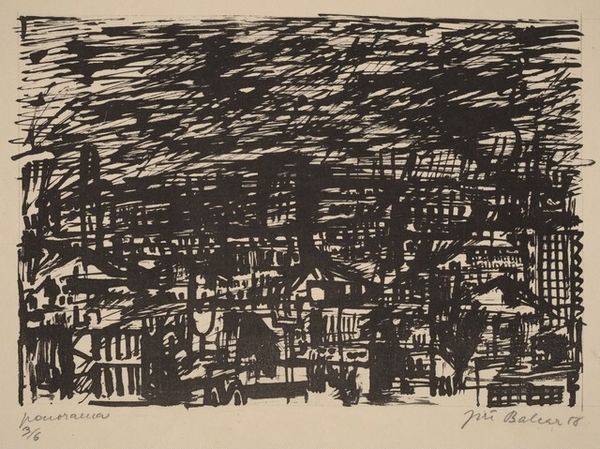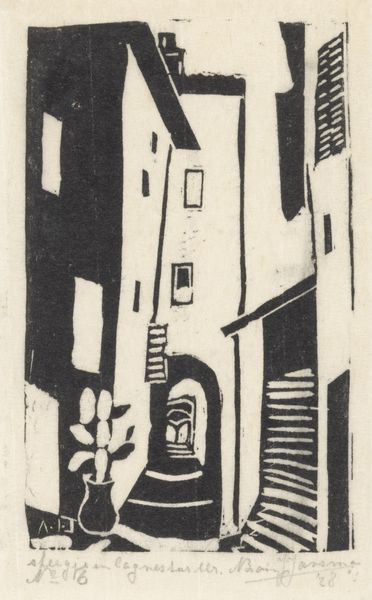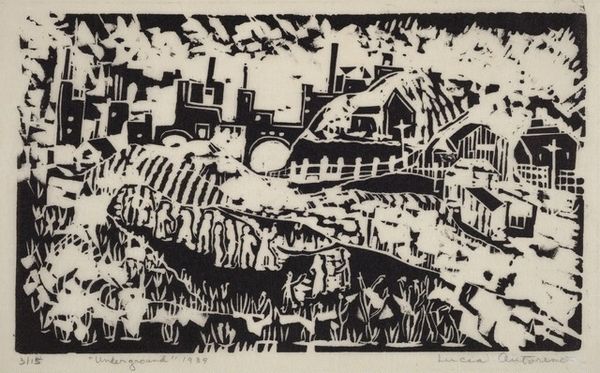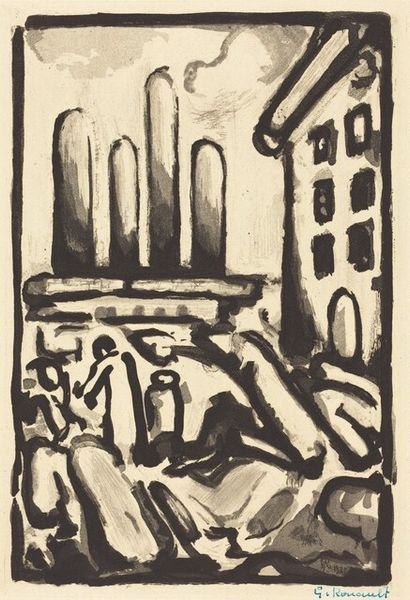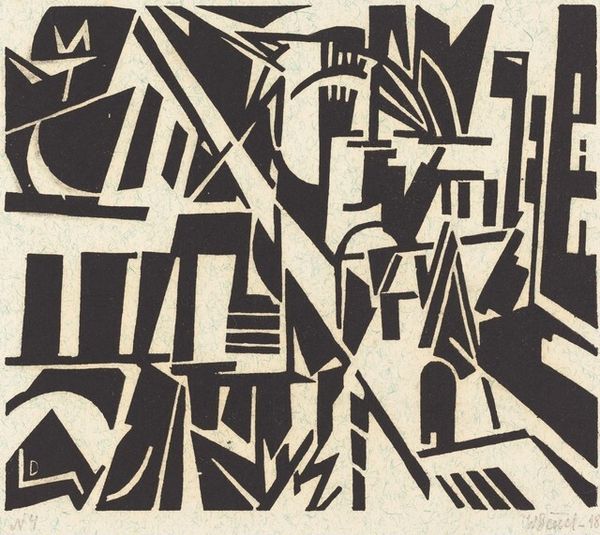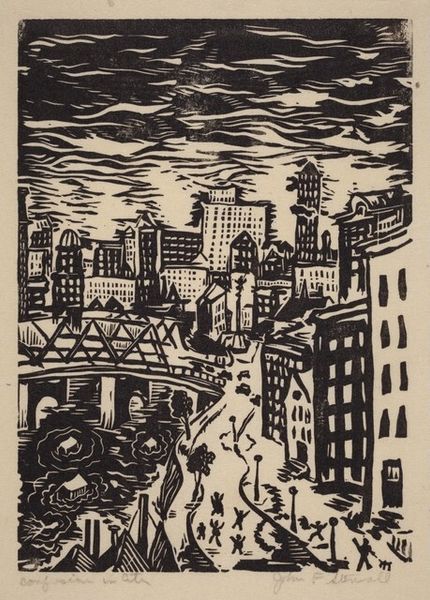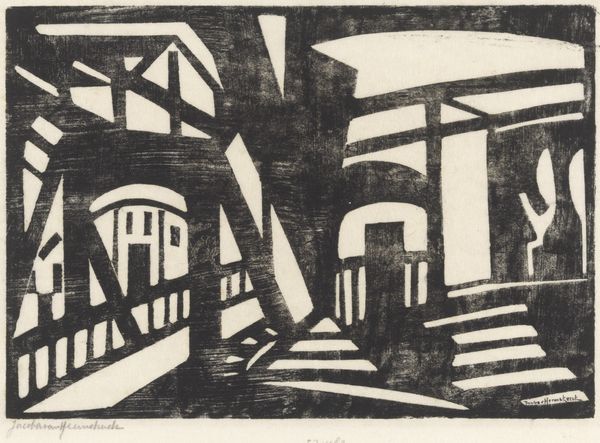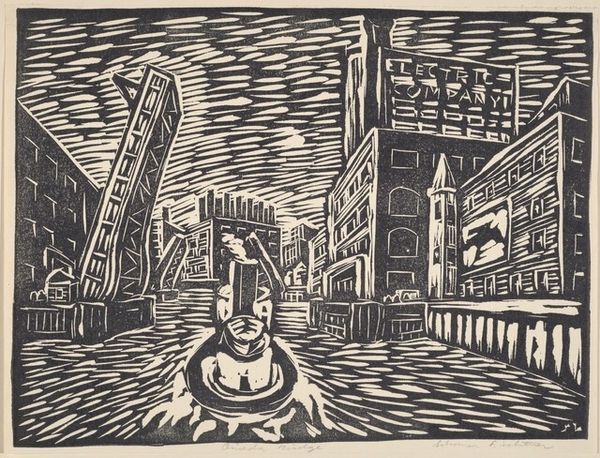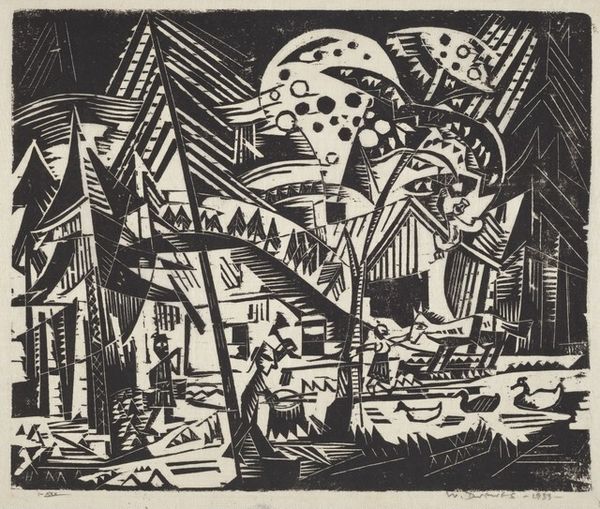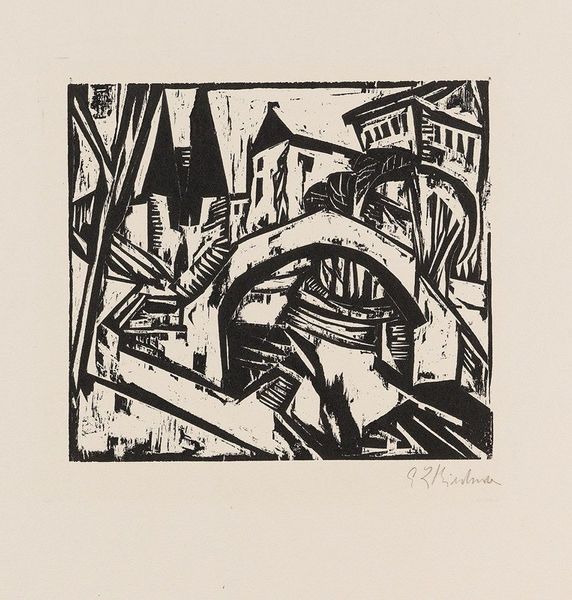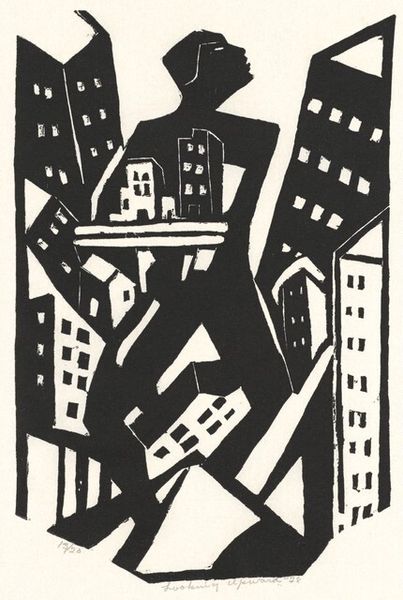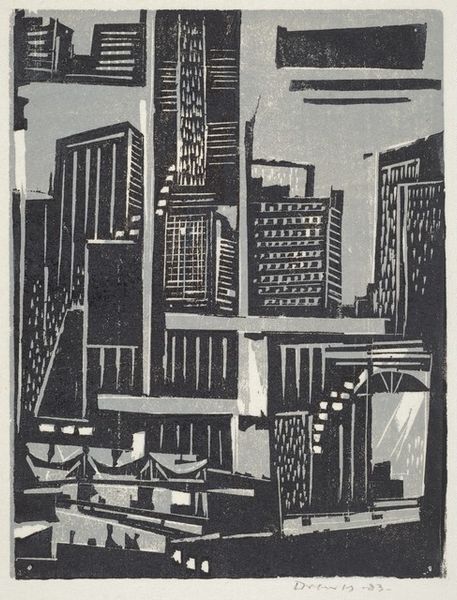
print, woodcut
# print
#
geometric
#
expressionism
#
woodcut
#
line
#
cityscape
Copyright: National Gallery of Art: CC0 1.0
Curator: This is Erich Heckel's woodcut "Stralsund," created in 1912. It exemplifies the bold aesthetics of German Expressionism. Editor: My initial impression is a sense of urban anxiety, even claustrophobia. The sharp, angular lines almost feel aggressive, don't they? Curator: Precisely. As part of Die Brücke, Heckel sought to express raw emotion through simplified forms. Woodcut, with its inherent roughness, was perfect for that. You see it here capturing the zeitgeist of a rapidly industrializing Germany, the psychological weight of city life. Editor: The use of black and white is striking, heightening the dramatic contrast. The shapes of buildings, the figure in the foreground… they are distilled to their essential symbolic forms, like archetypes rather than realistic representations. Curator: Consider the social context: Stralsund was a Hanseatic city, steeped in tradition, but changing rapidly. This print captures that tension. The fractured perspective embodies the broader cultural upheaval as Germany barreled towards war. Artists acted as seismographs anticipating events and conveying how society actually feels about the course it's taking. Editor: I'm drawn to the stark tower; it pierces the composition vertically and projects upwards in stark opposition with all the angled slashing. Is that intended to evoke something specific? Some spiritual counterweight or memory of what was? Curator: It’s complex. That could be it. Expressionist artwork embraced a form of modern paganism where spiritual symbolism mingles with the emotional tension in art—a rebellion against tradition that still invokes its power. So even something so outwardly rebellious carries the imprint of history within its form. Editor: It’s a visceral work, capturing a disquiet that resonates even now. Thank you for shining light into the shadowy depths of Heckel's world. Curator: It offers a visual language for inexpressible tensions; a reminder that art provides unique insight on transitional moments throughout society.
Comments
No comments
Be the first to comment and join the conversation on the ultimate creative platform.
